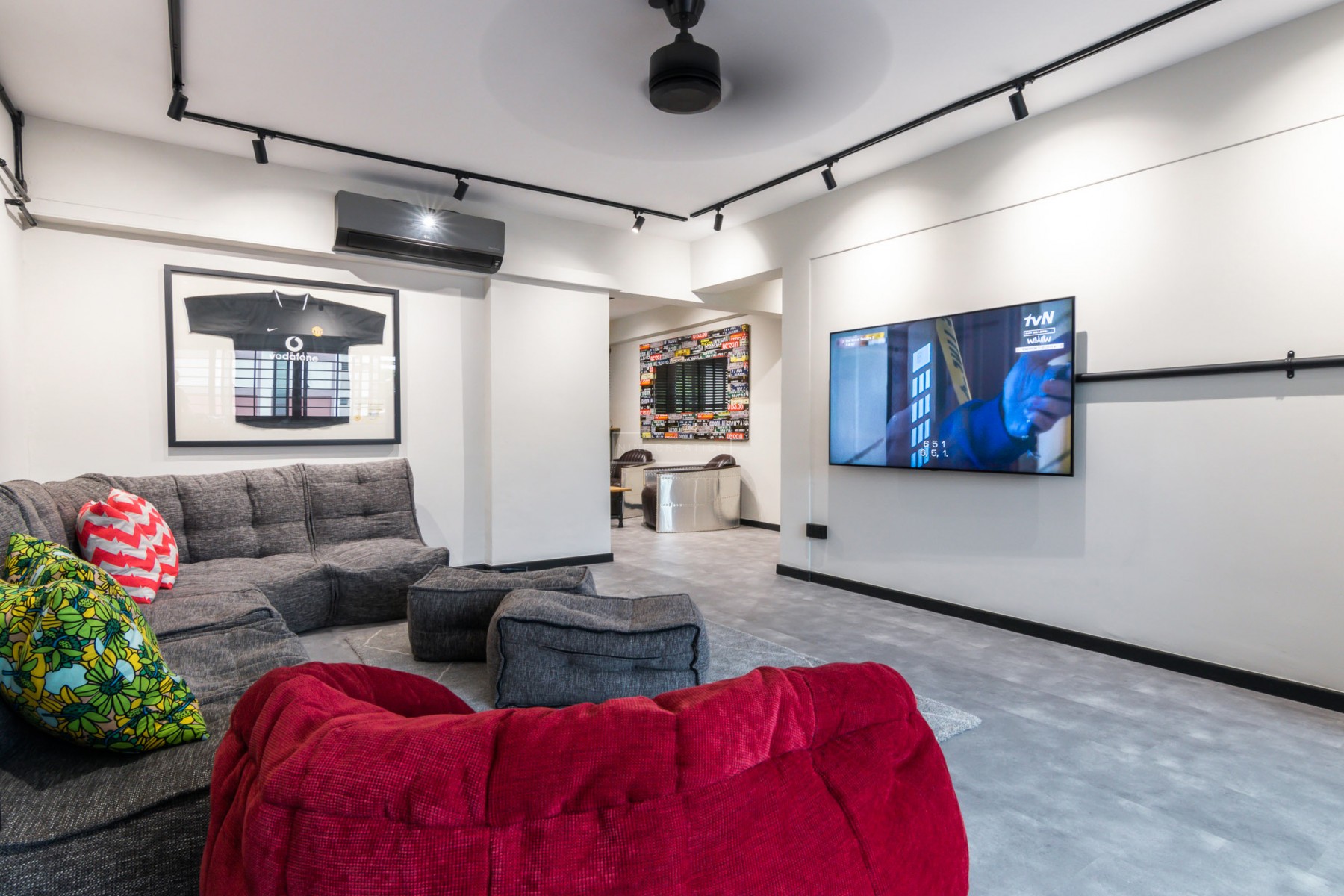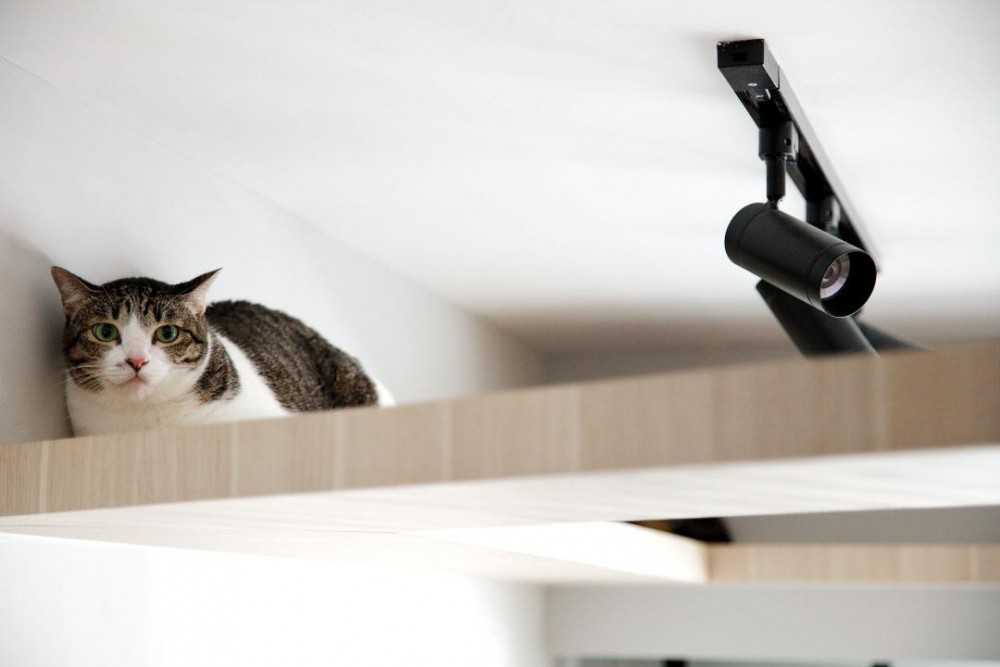Should You Get A Vertical Garden For Your Balcony?
In Singapore, where every square metre counts, residents are increasingly turning to innovative solutions to maximize their living spaces.
One such trend that’s gaining popularity is the installation of vertical gardens on balconies.
But is a vertical garden right for your balcony in Singapore?
In this guide, we’ll help you navigate the decision-making process and explore the benefits, considerations, and steps involved in bringing greenery to your vertical space.
What Is A Vertical Garden?
Before we discuss benefits and considerations, let’s first talk about what exactly is a vertical garden.
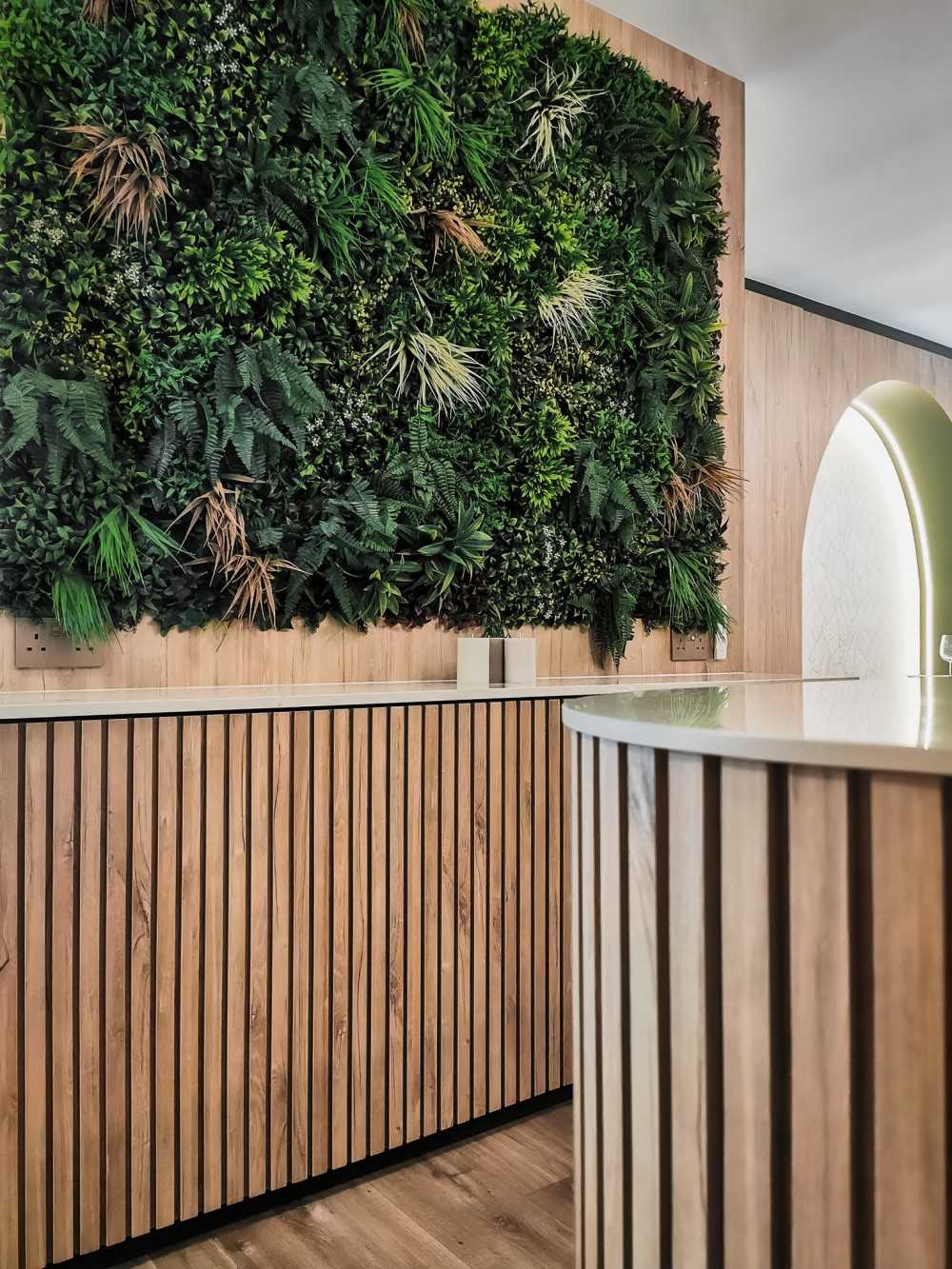

289D Punggol Place ($100,000) by Elysian Design Studio
Simply put, a vertical garden is a gardening method that involves growing plants vertically, often on a wall or other vertical surface.
Instead of traditional horizontal gardening, where plants are grown in the ground or in containers on a flat surface, a vertical garden allows plants to grow upward.
There are many different options when it comes to vertical gardens.
If you don’t have much space to work with, you can go for stacked planter systems or modular panel systems:
- Stacked planters are designed as a series of planters or containers that are stacked on top of one another. These can be arranged in a vertical fashion, allowing you to grow multiple plants in a compact space.
- Modular panel systems consist of individual panels or modules that can be mounted on walls. They are versatile and easy to install, and often used in both indoor and outdoor settings.
If you do have the luxury of space, you have the option of installing a living wall or green wall.
These are essentially larger, full-scale vertical gardens – they can cover entire walls, and require a significant amount of space.
Living walls often use a hydroponic or soil-based system to support a wide variety of plants, including larger ones.
While living walls fall under the category of full-scale vertical gardens, they’re not the only option under this category.
There are also preserved green walls and artificial walls available to cater to various preferences and requirements.
Living Green Walls vs Preserved Green Walls vs Artificial Walls
Most people associate the term “vertical garden” with living green walls, but that aside, there are also other options for you to choose from.
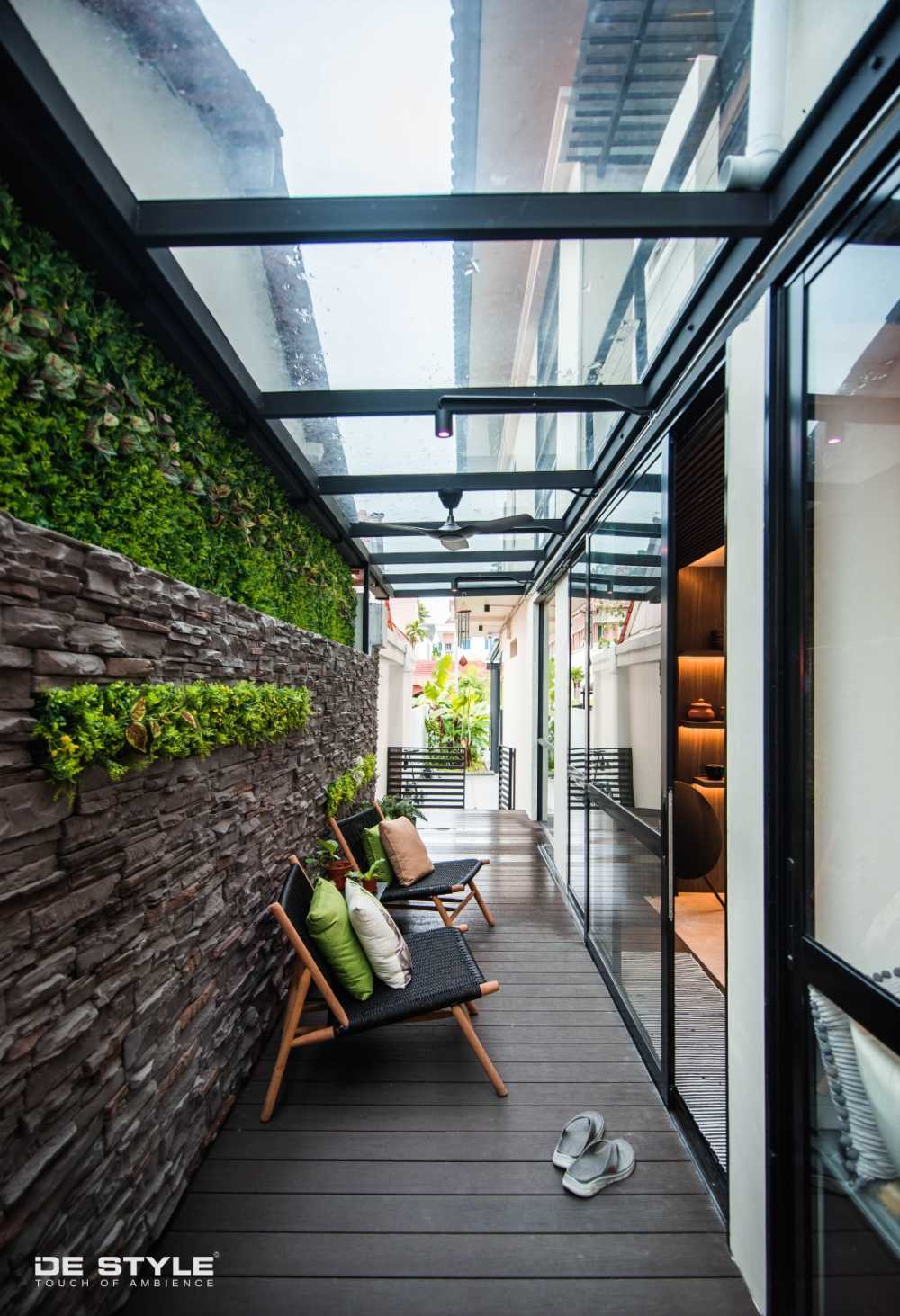

Hua Guan Avenue ($300,000) by De Style Interior Pte Ltd
This includes preserved green walls and artificial walls.
Here, we’ll break down the differences between each, so that you can figure out what works best for your needs.
Living green walls
Living green walls are characterized by the use of real, living plants. They can consist of a wide variety of plant species, including flowers, herbs, and even small shrubs or trees.
Maintenance-wise, these walls may* require ongoing care, including regular watering, pruning, and maintenance to ensure the health and vitality of the plants. They may also need occasional replanting to replace aging or damaged plants.
In terms of appearance, living green walls offer a natural, lush appearance with dynamic growth and seasonal changes. They provide a fresh and vibrant aesthetic, contributing to improved air quality and aesthetics.
*Note that the extent of maintenance can vary. Some living green walls come equipped with automated irrigation and fertigation systems, reducing the need for manual watering. Still, occasional pruning and plant replacement may be necessary, depending on the wall’s design and the specific plants used.
Preserved green walls
Preserved green walls use real plants that have been treated and preserved to maintain their appearance without the need for soil or water. The preservation process typically involves using glycerin or similar substances to replace plant sap.
Maintenance-wise, these walls are virtually maintenance-free, as they do not require watering or regular care. They retain their appearance for an extended period without the need for pruning or replacement.
When it comes to appearance, preserved green walls have a lifelike appearance and can mimic the look of living plants effectively. They are often chosen for their longevity and consistent appearance.
Artificial green walls
Artificial green walls use fake or artificial plants made from materials like plastic, fabric, or silk. They do not involve real plant life.
Maintenance-wise, these walls are the lowest maintenance option, as they do not require any care or upkeep, such as watering, pruning, or replacement.
When it comes to appearance, artificial green walls can closely mimic the appearance of real plants, but they lack the depth and vitality of living or preserved green walls. However, they offer a consistent look throughout the year.
To summarise:
- Living walls are valued for their natural beauty and environmental benefits but require ongoing care.
- Preserved walls offer a similar appearance with minimal maintenance.
- Artificial walls require the least maintenance but lack the genuine vitality of real plants.
There’s no right or wrong choice here – it really depends on your lifestyle and requirements!
For example, if you travel frequently and aren’t able to maintain your plants regularly, you might prefer to go with a preserved wall or artificial wall rather than a living wall.
On the other hand, if you’re a dedicated plant parentand have the time and commitment to care for your plants, a living wall can be a rewarding choice.
The dynamic growth and changes of living plants bring a sense of vitality and connection to nature that can’t be replicated by preserved or artificial alternatives.
Benefits Of Vertical Gardens
There are a few benefits of vertical gardens, including better space utilisation, aesthetics, improved air quality, etc.
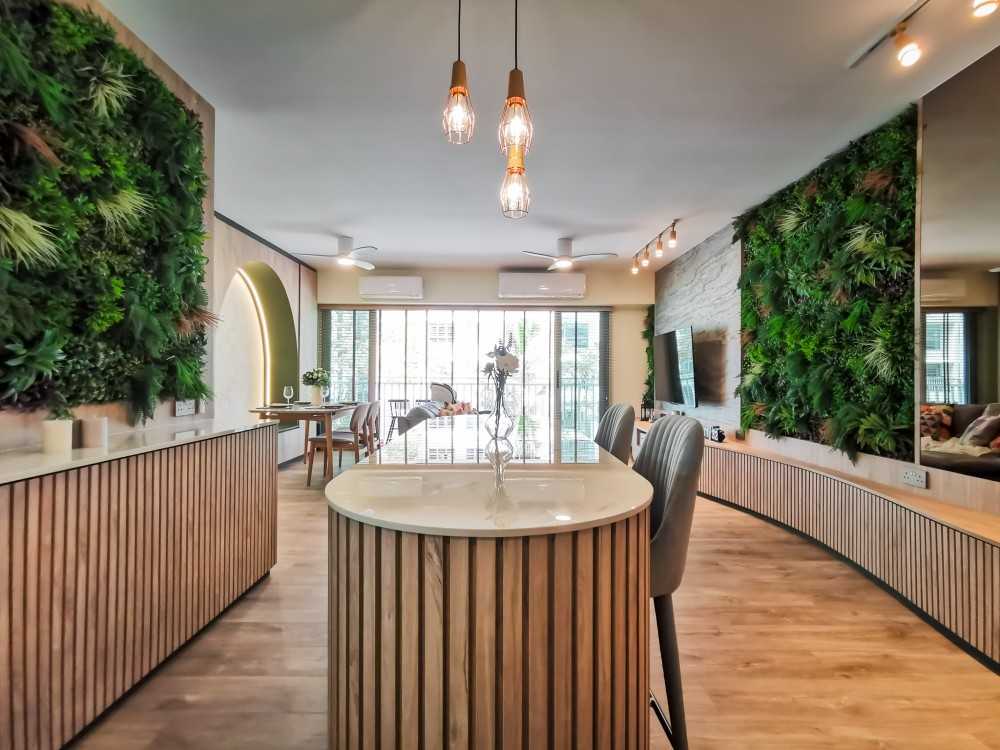

289D Punggol Place ($100,000) by Elysian Design Studio
Firstly, let’s talk about space utilization.
In a city where balcony space can be limited, a vertical garden allows you to make the most of every inch.
It’s the perfect opportunity to create your own urban oasis, regardless of the size of your balcony.
Next, let’s discuss aesthetics.
Here, vertical gardens instantly enhance the visual appeal of your balcony, transforming it into a lush, green space.
Think of your vertical garden as a slice of nature within your own home, and a place where you can relax, unwind, and recharge.
Next, another key benefit is improved air quality.
Vertical gardens are natural air purifiers. They filter pollutants from the air, improving overall air quality.
This not only benefits your balcony but also contributes to a cleaner urban environment.
Finally, vertical gardens help with temperature regulation.
Singapore, known for its tropical climate, can experience intense heat and sunlight.
To counter this, install a vertical garden, which can act as a natural sunscreen for your balcony.
The foliage and plants absorb and block a significant portion of direct sunlight, providing a cooling and shading effect.
This helps create a comfortable outdoor space on your balcony.
Considerations Before Installing A Vertical Garden
Here are the key considerations to keep in mind before installing a vertical garden:
- Balcony size and structure
- Budget
- Plant selection
Balcony size and structure
Obviously, the available space on your balcony is a fundamental factor in planning a vertical garden.
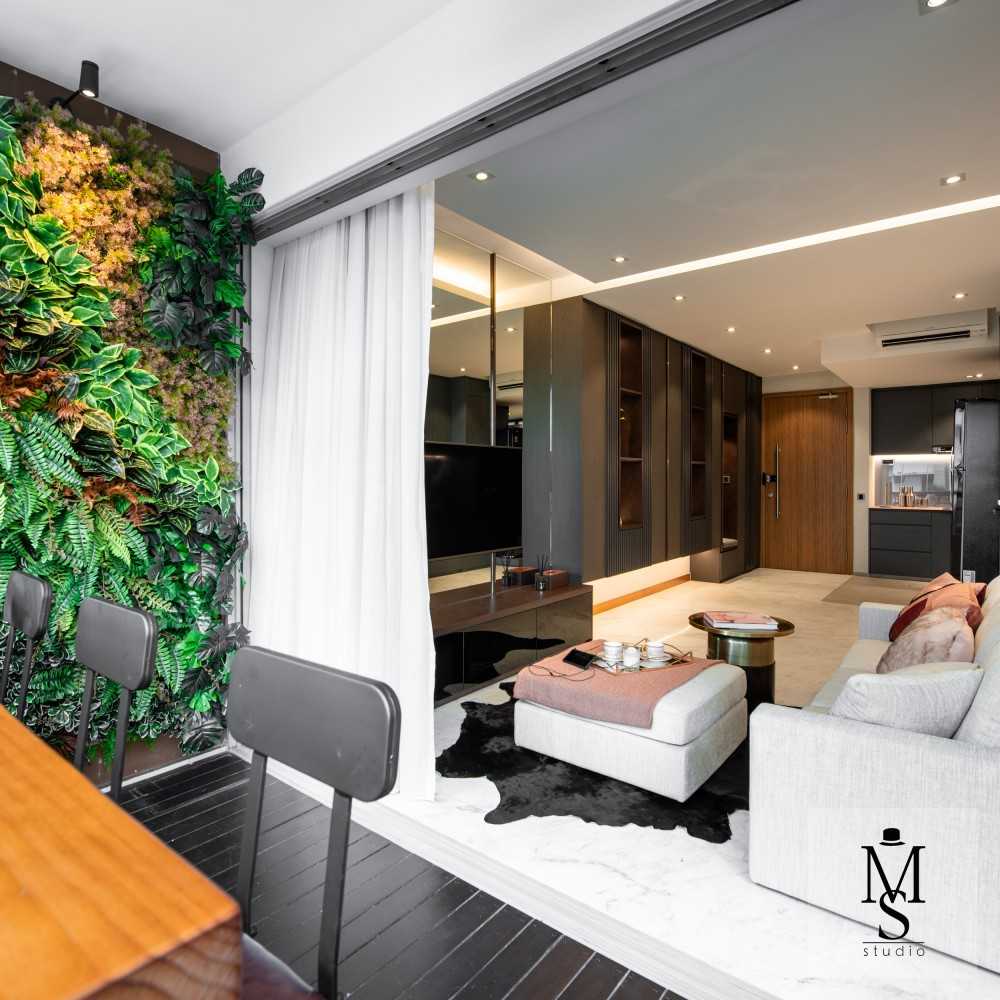

Waterfront Key ($120,000) by Mr Shopper Studio
Measure the dimensions of your balcony to understand the surface area you have for your garden. This measurement will help you determine the number of plants and the type of vertical garden system you can install.
The size of your balcony aside, also keep an eye out for structural requirements or constraints.
For example, vertical gardens require water for irrigation.
If you wish to install a vertical garden in your balcony, you’ll need to confirm that your balcony has a proper drainage system in place to prevent water accumulation and potential damage to the structure.
Budget
The cost of installing a vertical garden can vary widely based on factors such as the type of system chosen, the size of the project, the complexity of the design, and the materials used.
For example, smaller and simpler systems like modular panel systems or stacked planters are typically more cost-effective to install compared to full-scale living walls.
The choice of plants also impacts the budget. Some plants are more expensive than others, and rare or exotic species may come at a higher cost. Additionally, the number of plants required to fill the vertical garden will influence expenses.
The complexity of the irrigation system and support structure can significantly affect costs. Automated irrigation systems, while convenient, may have a higher upfront cost compared to manual watering methods.
For modular panel systems and stacked planters, you can do some research on Shopee to get a gauge of average costs.
For vertical gardens, a rough benchmark to keep in mind is $200 to $1200 per square metre (including installation).
Plant selection
Whether you need to take care of plant selection by yourself depends on which option you’re going for (living wall, stacked planter, modular panel system, etc).
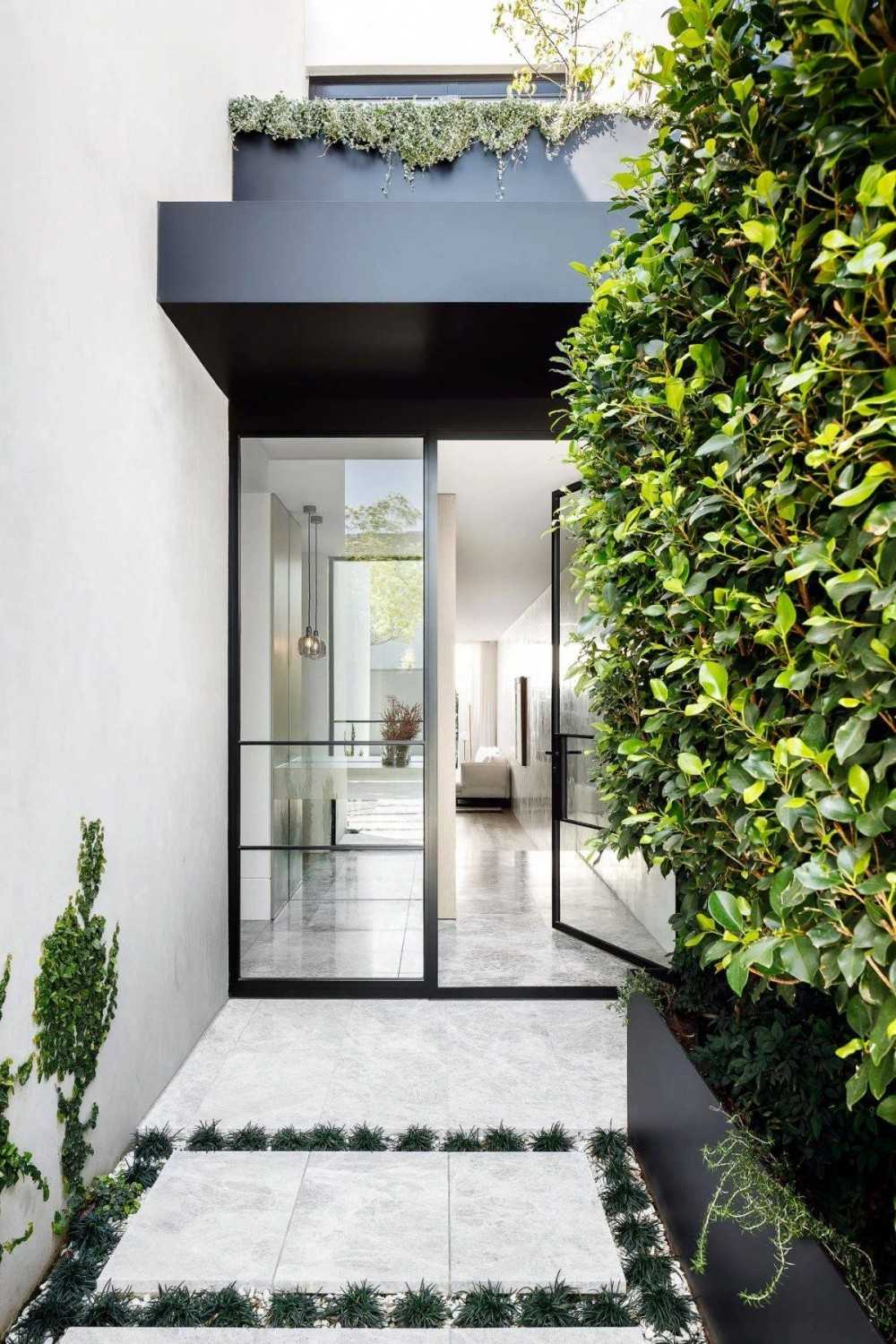

Semi-D at Holland ($110,000) by 13 Degree Design Studio Pte Ltd
When you choose a living wall, horticultural experts or landscape designers typically select the plant species for you. They consider your balcony’s microclimate, exposure to light, and local climate conditions to choose the most suitable plants. This ensures that your vertical garden thrives with minimal input from you.
If you’re opting for a DIY stacked planter system or modular panel system, you’ll be responsible for choosing and planting your greenery. Here are some considerations:
First, invest time in researching plant varieties that are well-suited to Singapore’s tropical climate. Look for plant care information, such as sunlight and watering requirements, to make informed selections.
Next, decide on an assortment of plants that not only thrive individually but also complement each other aesthetically. Consider varying heights, textures, and colors to create an appealing visual display.
Last but not least, be honest about your ability and willingness to maintain the selected plants. If you have a busy lifestyle, prioritize low-maintenance species to reduce the time and effort required for care.
A Final Word On Vertical Gardens
In summary, vertical gardens are a practical and visually appealing addition to our urban environments. They provide space-efficient solutions for adding nature to our surroundings, improving air quality, and combatting the urban heat island effect.
As for whether you should opt for a professionally designed living wall or choose a DIY stacked planter system, your decision should align with your lifestyle and design preferences.
Regardless of if you’re a seasoned gardener or just starting, consider a vertical garden as a means to connect with the natural world and enhance your living environment.
Want to check out home renovation projects for more inspiration? Browse home renovation projects on Hometrust, or click the button below to get connected with expert designers!
Renovating soon? Let Hometrust recommend the best interior designers.
If you are reading this, you are probably wondering how you can create your dream home.
Here’s the thing, everyone’s needs and requirements for their home renovation is different. A designer that may work for someone else, may not quite work for you.
At Hometrust, we’re here to help match top rated designers, recommended by past homeowners to you through our data-driven and matching algorithm.
Whether you are looking for partial renovation or a full fledge overhaul, we’ll be able to recommend you top designers to match your renovation requirements and lifestyle.
Recommendations and free and you can simply start by helping us understand your needs below!
Get RecommendationsRenovate safe!
The Hometrust Team

